What makes a bait finesse casting rod the right one for you and your fishing? Here’s a quick guide to what to look for and how to avoid making a bad decision and maybe regretting your choice.

What is a Bait Finesse Casting Rod?
The style of baitcasting lure fishing known as BFS or Bait Finesse System is named after a concept coined by Shimano to describe reels and rods capable of casting ultra light finesse baits. Taking the reels first – they require extremely light, shallow spools and also refined casting brake systems for the physics of casting light lures to work.
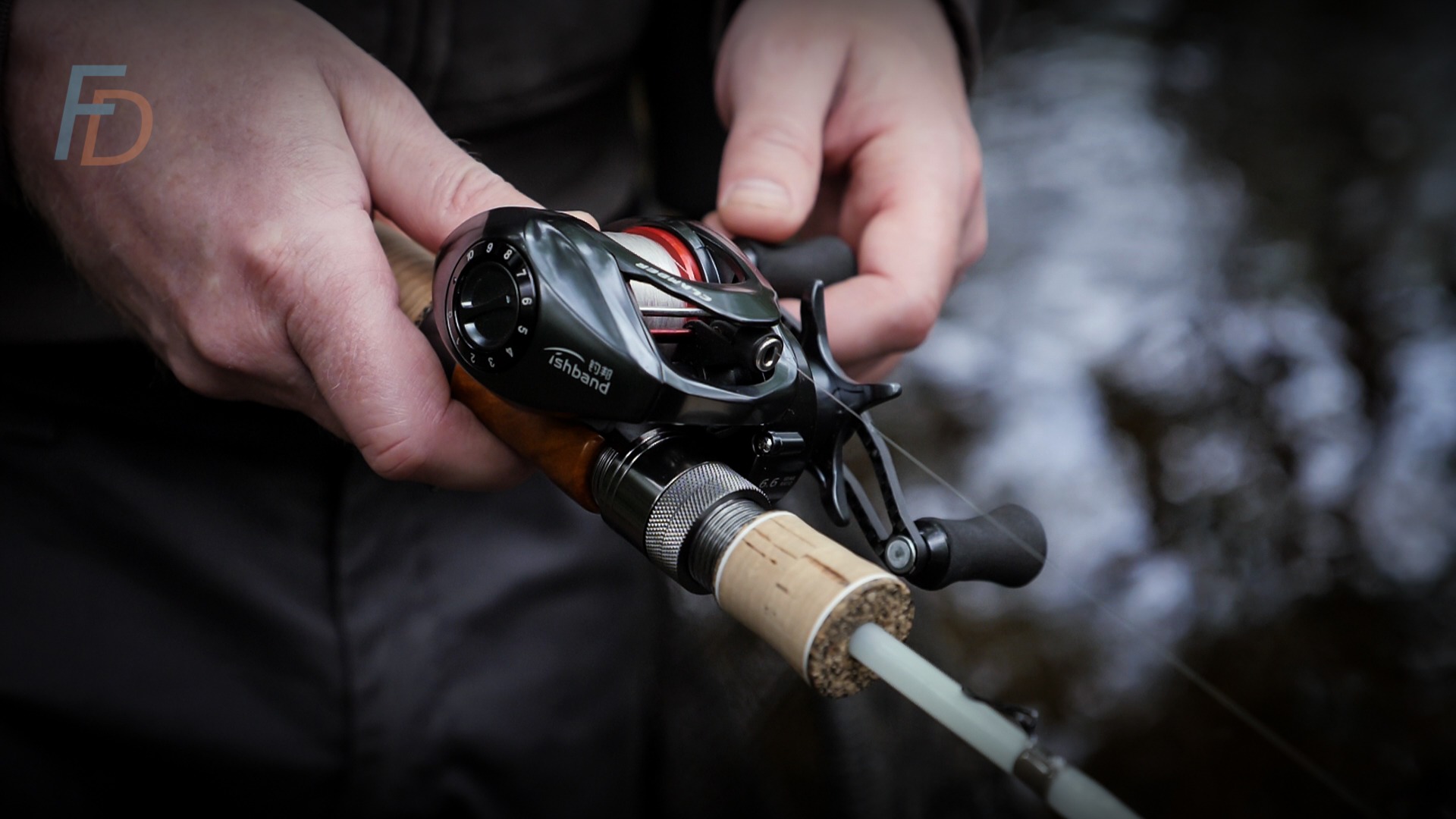
Unsurprisingly the character of the rod is the second, vital ingredient in being able to cast very light lures. While there is not an exact, scientific definition of when a lure is light enough to be classed as “BFS” – it seems that most will weigh less than 5g (a nudge over 1/6th oz). Many of those lures will be in the 2.0-g to 3.5-g weight range (1/14th to 1/8th oz).
Therefore, popular lure-weight ratings for bait finesse casting rods will be in the 1 to 8-g range (which tends to correspond to a rating of “UL” for most manufacturers). Another common bracket for BFS rods with a little more backbone will be in 2 to 12-g lure range (which would often get a “L” rating). Again, this is far from an exact science – but these are reasonable examples of what to expect..
A super simplified way of looking at it is that bait finesse casting rods and reels let you use baitcasting gear for what would normally only be possible with spinning gear.
With that said, it isn’t just the lure weight rating that identifies a bait finesse casting rod...
Line guides
While it may be too obvious to need stating for anyone experienced in lure fishing – anglers transferring from a fly fishing background (for instance) might benefit from a quick tip on line guides. For spinning rods (used with fixed spool “spinning” reels), the butt line guide stands a long way off the rod blank (shown upper left, below). This is to allow the line to pass easily through that guide according to the angle that the cone-shaped swirl of line pours off the spool during a cast with a spinning reel.
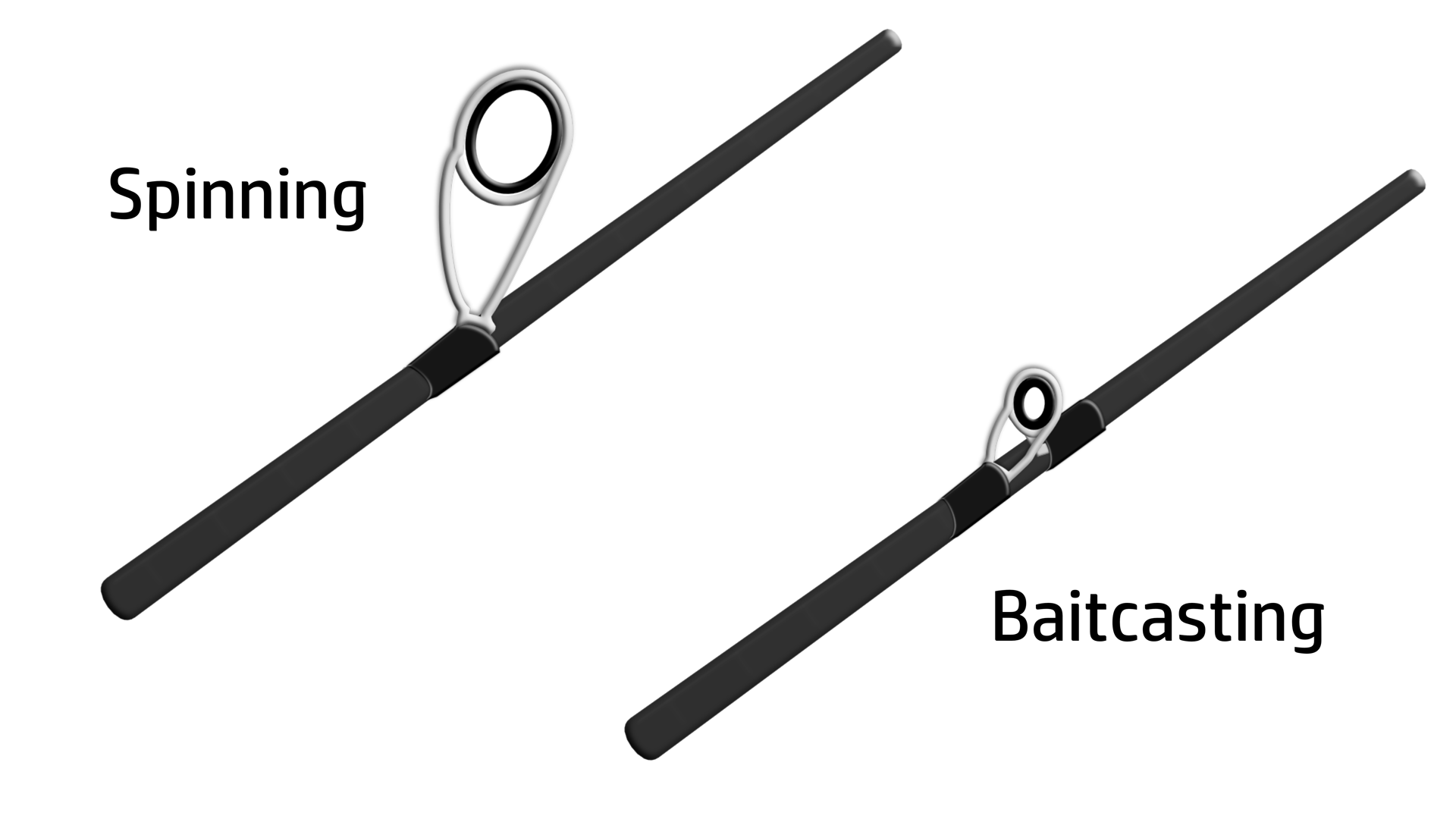
For baitcasting rods, that guide sits much closer to the rod blank (shown lower right, above). This works since the line flows out in a much straighter and more continuous strand from the line-guide on the front of the baitcasting reel (while the spool rotates).
Reel Seat Designs for a Bait Finesse Casting Rod
As well as a down-locking reel-seat, bait finesse casting rods tend to have a trigger grip on the opposite side to the reel itself. However, not every bait finesse rod has that classic trigger grip.

Down-locking reel seat (the screw threads tighten down away from the rod), "baitcasting" low profile butt line-guide & classic trigger grip
For some anglers, particularly those who prefer a classic “round” baitcasting reel to a low-profile one, might choose a triggerless grip.
Aside from identical twins, anglers don’t often have exactly the same shape or size of hand as each other. For many, a trigger could get in the way of palming a round reel comfortably.

Classic "Round-Reel" fans might prefer a triggerless grip
This is one reason to know the different line-guide designs between spinning and baitcasting rods (so you can pick out a baitcasting rod, even without a trigger-grip). Having said that, you might realistically need a custom-made rod to find many options with a triggerless grip for bait finesse at this time!
Choosing the Action of a Bait Finesse Casting Rod
As discussed in the main BFS article on Fishing Discoveries, the action of a rod is its bend profile. It isn’t really a description of its overall stiffness (power) or how quickly it jumps back to being straight and stop wobbling after being whipped into a bend during casting (recovery).
Instead:
Here’s where it gets a bit tangled between recovery and action…
With a fast-action rod, it is a bit like casting a very short “slow” rod strapped to the end of a longer, stiff rod.
The overall effect of that is that, because there is such a short portion of the rod which is doing the most bending, it tends to jump straight in a much shorter time than a full-flex rod.
In other words, a “fast” flex profile tends to also create a quicker recovery – with all other things being equal.
One of those “other things”, however, is the stiffness of the blank. That interaction between the flex profile and the blank stiffness seems to be pretty complicated. It’s safe to say bait finesse rod-making is probably a hellish mix of voodoo and science…
Why Pick a Fast Action Bait Finesse Casting Rod?

A fast action, relatively stiff BFS rod made by Smith - ideal for heavy sinking minnows in the 45 to 50-mm length & 4 to 5.5-g weight ranges
In short you want a fast action rod when throwing heavier baits, working them vigorously with the rod and setting the hook hard. A quick, short flick is the best casting action for fast rods and sometimes this will help in tight settings where you cant swing the rod far. This fishing style is typical of heavy, sinking minnows fished in powerful, fast-flowing headwater streams in Japan. The Japanese Youtuber "Tsurinan" shows this fast "whip" style of casting and also vigorous working of the rod:
Those small-stream/fast action rods tend to be relatively short (between 4’ 3” and 5’ 6”). At the other end of the scale, a fast action/relatively stiff rod which is longer (between 6’ and 7’) is also probably what you want for throwing baits as far as possible from the shore on big waters.
Why Pick a Slow Action Bait Finesse Casting Rod?
When you want the rod blank to do much of the casting (accuracy with very light lures). Slow-action rods extend the time-window for you to choose your casting release point. This is because the flex and recovery takes longer. At the same time, more of that flex/recovery feedback is transmitted down through the whole rod. Click the following orange link to check out more about release points, backswings and other bait finesse casting fundamentals.
Actions anywhere between medium-fast and slow could be good for flip-casting depending on the overall stiffness and recovery of the rod. Again, you’ll have an easier time flip-casting when the timing window for your ideal release point is extended by having a slower action or a slightly slower-recovering material for the blank…
Blank Materials and Construction
Graphite
Bait finesse casting rods are available in two main graphite constructions – the common hollow tubular construction and a more unusual solid graphite blank. However, many bait finesse rods have hollow butt and mid-sections which are joined to a solid tip (to take advantage of each construction method’s properties.
Let’s explore those now.
Hollow Blanks
The physics and material science of tubular structures means that a hollow tube has a greater resistance to being deformed and bent than a solid rod of the same material. That greater resistance makes hollow blanks stiff, fast-recovering and potentially very lightweight (as long as the proportion of graphite fibres is high relative to the amount of resin which binds them together.

Affordable, hollow graphite bait finesse casting rod by Kingdom (has two tips - one rated UL 1-8g and one rated L 2-12g)
If you'd like to try one of these "two in one" affordable Kingdom Pro BFS rods with the matt-finish blanks - you can check out current pricing and global availability on my Aliexpress affiliate links in this article (which earn Fishing Discoveries essential commissions on qualifying purchases). Mine is the 1.8m Casting version:
For light, hollow construction rods, the lure will be heavy relative to the blank. Therefore, elasticity of the rod and the speed of the casting stroke is what creates casting force. The inertia of the lure is much more important in creating a bend in the rod compared to a heavier blank.
Sensitivity tends to be greater in stiff, hollow, lightweight blanks, because the lure has significant mass relative to the low mass/low inertia of the blank – meaning that any change in movement of the lure easily moves the blank and that movement is transmitted directly down the rod to your hand.
Solid Blanks
A solid graphite rod is a softer blank with slightly slower recovery – but is still typically a little stiffer than glass (depending on the resin/carbon mix). Because there is no need for a hollow centre to the blank, a light or ultralight power rod may have a really thin diameter when solid graphite is used.

The Tsurinoya Ares C472 is an UL BFS rod with a single-piece solid carbon blank
That softer, slower recovery helps to create a deeper flex with light lures – making it good for casting styles which rely less on a fast swing of the rod acting as a lever. Instead, the spring/recoil of the rod when you bend it is what creates most of the casting impetus.
Consequently, this can be a good option for flip casting or similar styles where the rod is not so much swung as bent and then allowed to throw the lure in the same way a bow “throws” an arrow.
Solid Tips
Based on those properties above, it is relatively easy to see how a solid-tipped graphite rod is an easy way to create a fast or ultra-fast action in a rod. The hollow portion of the blank provides the stiffness – and then there is a rapid increase in flexibility as you pass into the solid section. The tapering profile of both hollow and solid sections allows further fine-tuning of the overall shape of the bend.

Kuying Teton Super Ultra light Bait Finesse Casting Rod - spliced solid tip (spiral-wrapped for strength) and hollow main blank
The Kuying Teton TTC 510S 0.3g to 3g (above) is a super ultra light bfs rod, which at the same time has a fast action owing to the thin, soft solid tip. The spiral wraps of carbon tape along the solid tip add extra reassurance and the build quality is exceptionally high. Take care to note that the "spinning" rods built on the same blank are TTS (rather than TTC) - an important detail.
You can check availability and order your own TTC510S directly from Kuying's store on Aliexpress using my Fishing Discoveries affiliate links in this article (which earn essential commission on qualifying purchases and support the running of the site):
Glass Bait Finesse Casting Rods
The best glass bait finesse casting rods are a hollow blank construction (though some, generally cheap, solid glass rods are available). In addition, the glass-fibre cloth itself needs to be of one of the more modern formulations which gives the blank greater stiffness than older glass blanks. An example of this would be “S-glass”.

S-Glass, custom-built Bait Finesse Casting Rod by Darren Keats at Resilure
Even when hollow glass is used, there tends to be a greater mass to the blank (compared to a similar-powered graphite rod). That greater mass seems to give the rod “authority” over the lure due to greater momentum when in motion.
Also, the combination of flexibility and mass means that (a bit like a split-cane fly fishing rod) – the blank is more likely to have a self-loading character. In other words, even without the weight/inertia of the lure, when you stop the back-swing of your cast, the rod will bend significantly all on its own
This will tend to create a deeper bend in the rod for a very light lure compared to a stiffer, lighter rod – and when the elasticity of the blank springs it straight again; that momentum/authority will throw that light lure more positively and easily.
Because:
Momentum = Velocity x Mass
Then it follows, to create a similar amount of momentum with a very light rod, you need to greatly increase the speed of the casting stroke (which can cause problems with back-lashes).
With that increased momentum and flexibility, the flip side is that feedback from the lure has more inertia to overcome. The relative softness can be a boon to keeping wildly thrashing fish pinned (where a stiff rod can bounce the hooks free).
Also, if the tip is too stiff (for instance in some cheap, solid glass bait finesse rods), the momentum of the tip and relative flexibility of the mid-sections of the rod will create a problematic “wobble” after the end of the casting stroke. The kick-back and wobble created will tend to increase the risk of back-lashes as well as making casting accuracy difficult.
For good quality glass bait finesse casting rods, there is a paradox of them being flexible with slower recovery – but a lot of the bend concentrated towards the tip. However, rather than a true “fast” action, it is more the type of action which would be described as Progressive in a fly rod. So, with each inch you progress from the tip towards the handle, there is a smooth multiplying up of the stiffness.

Resilure Glass Rod - progressive increase in power as you travel down the mid-section with a flexible tip
Particularly with glass rods, if you aren’t able to try-before-you-buy, then having video available to watch the bend profile and, particularly, the vibration damping/wobble-control during casting is really important.
Other material mixes
With ever-increasing complexity in material science, there are now many materials – and blends of materials – used in rod-building. Blends of glass-fibre and graphite with carefully-chosen resins are one example. Mackenzie fly rods were the first to include graphene in their blanks, Hardy incorporated “Sintrix” (silica nanospheres) into their rods – and I’m sure these and many other technologies will be passed on into other branches of fishing too.
The important things to stay on top of is what each material or material blend tends to do to a rod’s character. The addition of glass will tend to soften and slow down a rod – Sintrix and graphene will create greater stiffness and durability for a lighter-weight and slimmer blank.
Again, video of the rods in use so that you can see bend profile and recovery characteristics is the way to separate marketing hype from actual performance (and suitability for your specific needs).
Want to Keep up to Speed with BFS Developments, Stories & Tactics?
I'm continually adding new information to my BFS VIP Newsletter - and right now I'm experimenting with a very special welcome bonus, click below to find out more details before continuing with the next section of this article:

Single-piece or Multi-Section Bait Finesse Casting Rod?
Particularly in baitcasting there is a strong idea that putting joints into a rod will reduce its quality and performance by creating flat-spots, increase the weight and generally mess up what was originally a perfectly good single-piece blank.
Well, I’m going to catch some flack here, but these days great multi-piece rods are extremely possible to find.
Lots of people refuse to believe that my 3-piece Resilure glass rods are not single-piece blanks.
Also, in the same way that expensive wine in heavy bottles actually, literally, tastes better (because our brain makes our taste receptors more sensitive when we know the higher price!); I strongly think a lot of one-piece blanks cast or feel better because you expect them to…
Now, don’t get me wrong, single-piece blanks are great – until you want to travel or hike somewhere…
Split Handle or Full Handle?
Unlike longer rods for casting heavier lures over long distances, a lot of bait finesse casting is done with a single hand. Particularly on small streams with lots of obstructions, you are often improvising back-hand, fore-hand, overhead and flip-casts. The freedom to do that isn’t so available if you’re having to hold the rod with two hands.

Full handle on the affordable Acehawk CU Double rod
This probably explains why you see a lot of full handle designs (and why those full handles are often quite short). With that said, it is still perfectly possible to cast a split-grip rod with one hand – especially in the UL and L ratings common to BFS.
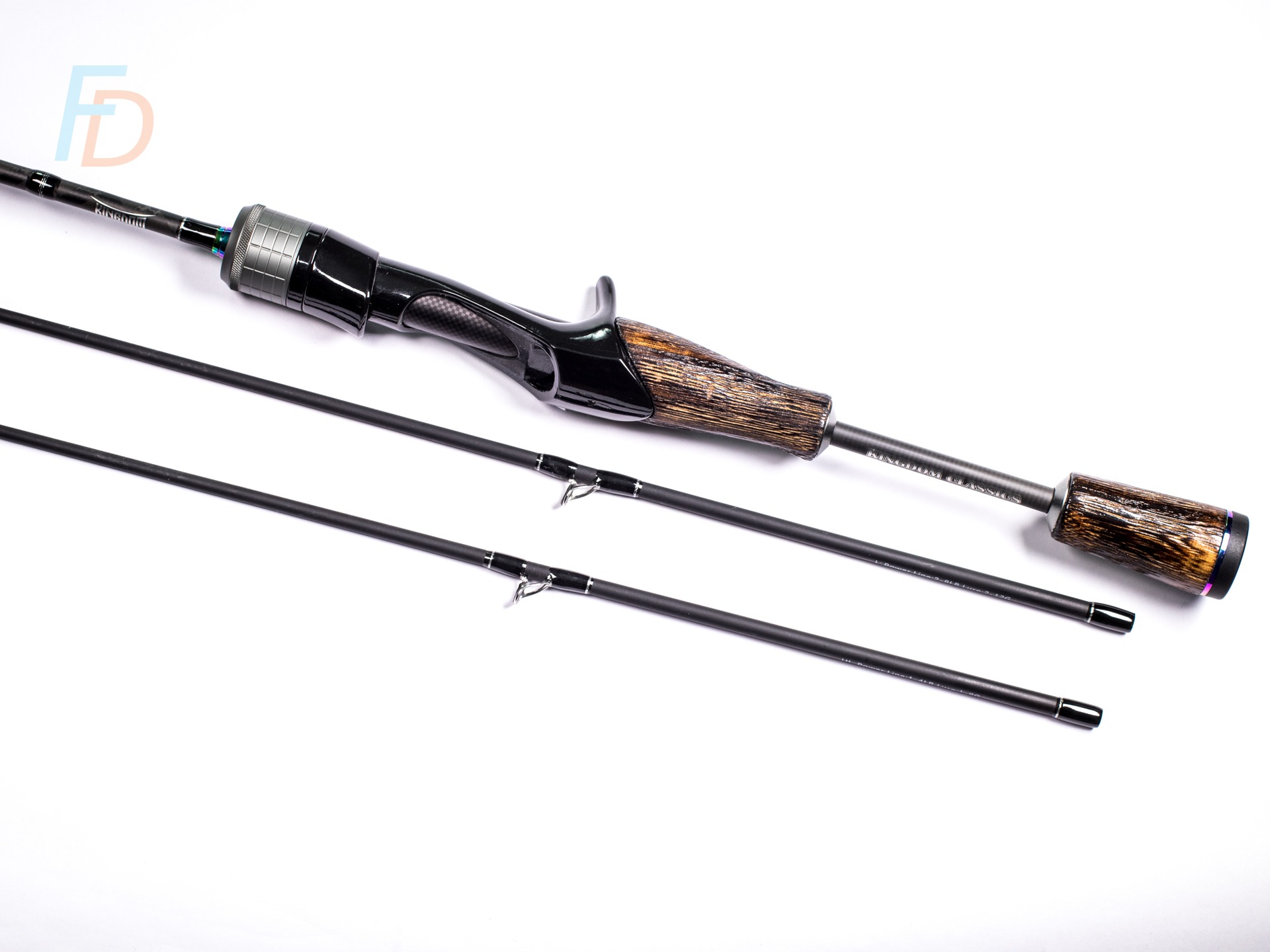
A split-grip handle on the Kingdom King Pro
Sometimes it is nice to put some extra zing into a cast by the combined action of pulling back the butt of the rod with one hand and blocking/pushing the front grip forward with your other hand.
That style of cast feels better with a split handle. Perhaps, then slightly longer rods and fishing situations requiring more distance casting suite a split handle better than small-water “trick-casting” styles.
Bait Finesse Casting Rods Round Up
Hopefully by combining the information above with your own experience of the type(s) of fishing you do will help you match up the stated specifications of different rods to what you actually want to own.
Knowing what action, length, lure-weight rating and recovery characteristics best support the tactics you are going to be using goes a long way to avoiding buyer’s regret. Wherever possible, checking out video of any prospective bait finesse casting rod before you buy it will give important clues when you can’t physically try-before-you-buy.
Let me know what your BFS rod-buying experiences have been in the comments…
Paul
Hungry for More Skills & Knowledge?
Click the orange links below to try these articles on for size:
BFS Rod Best Buys for Your Budget

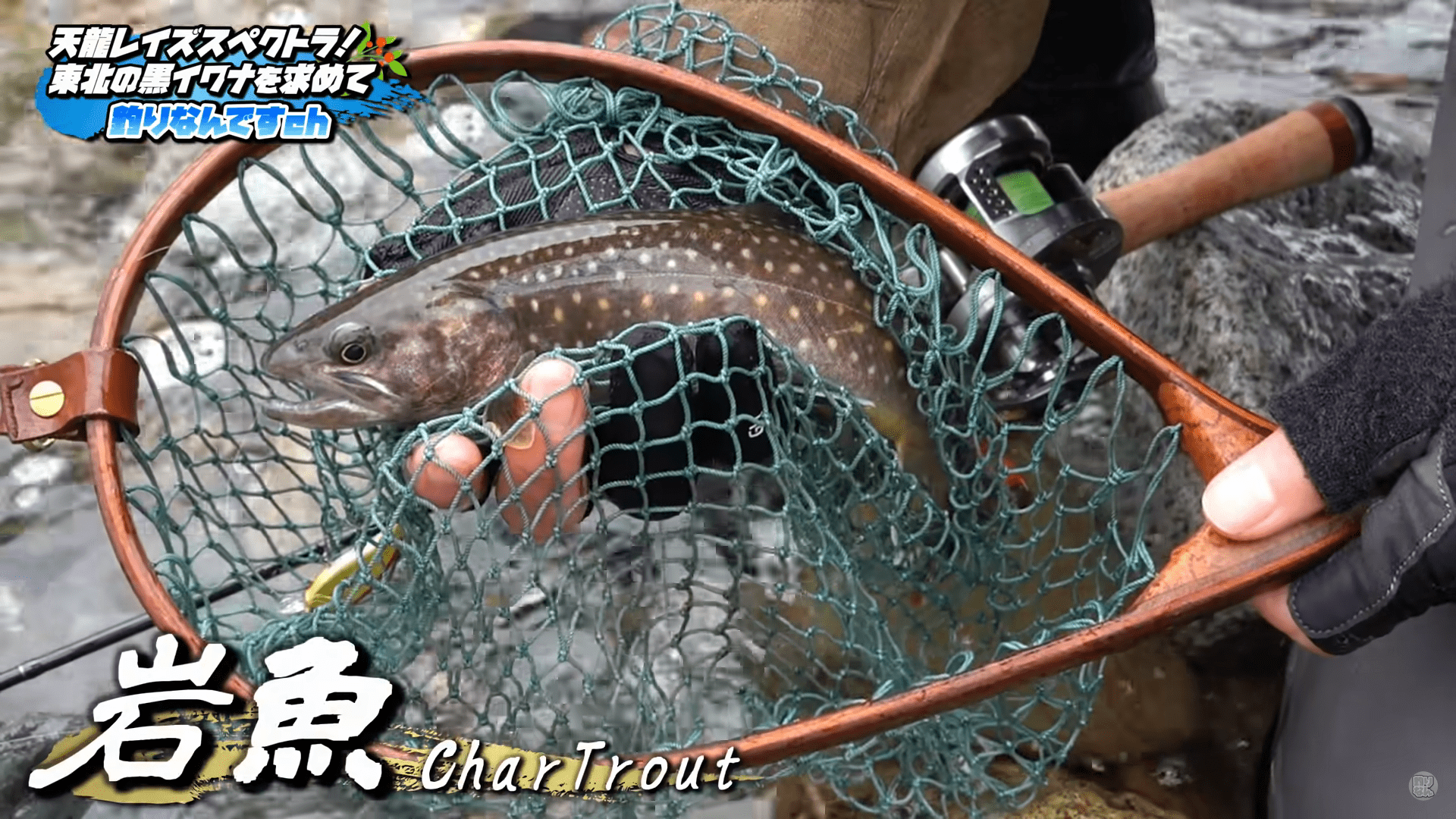
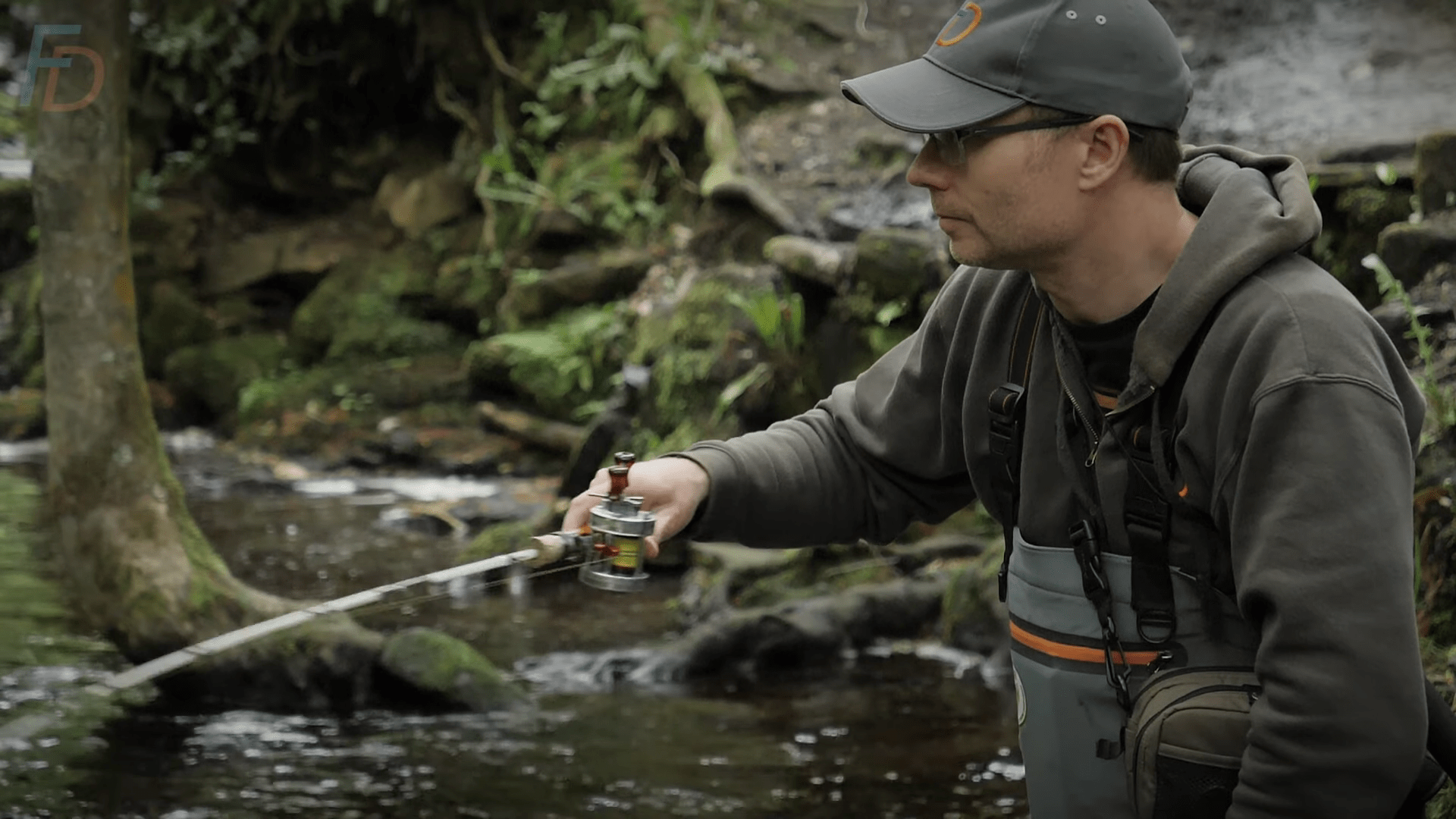


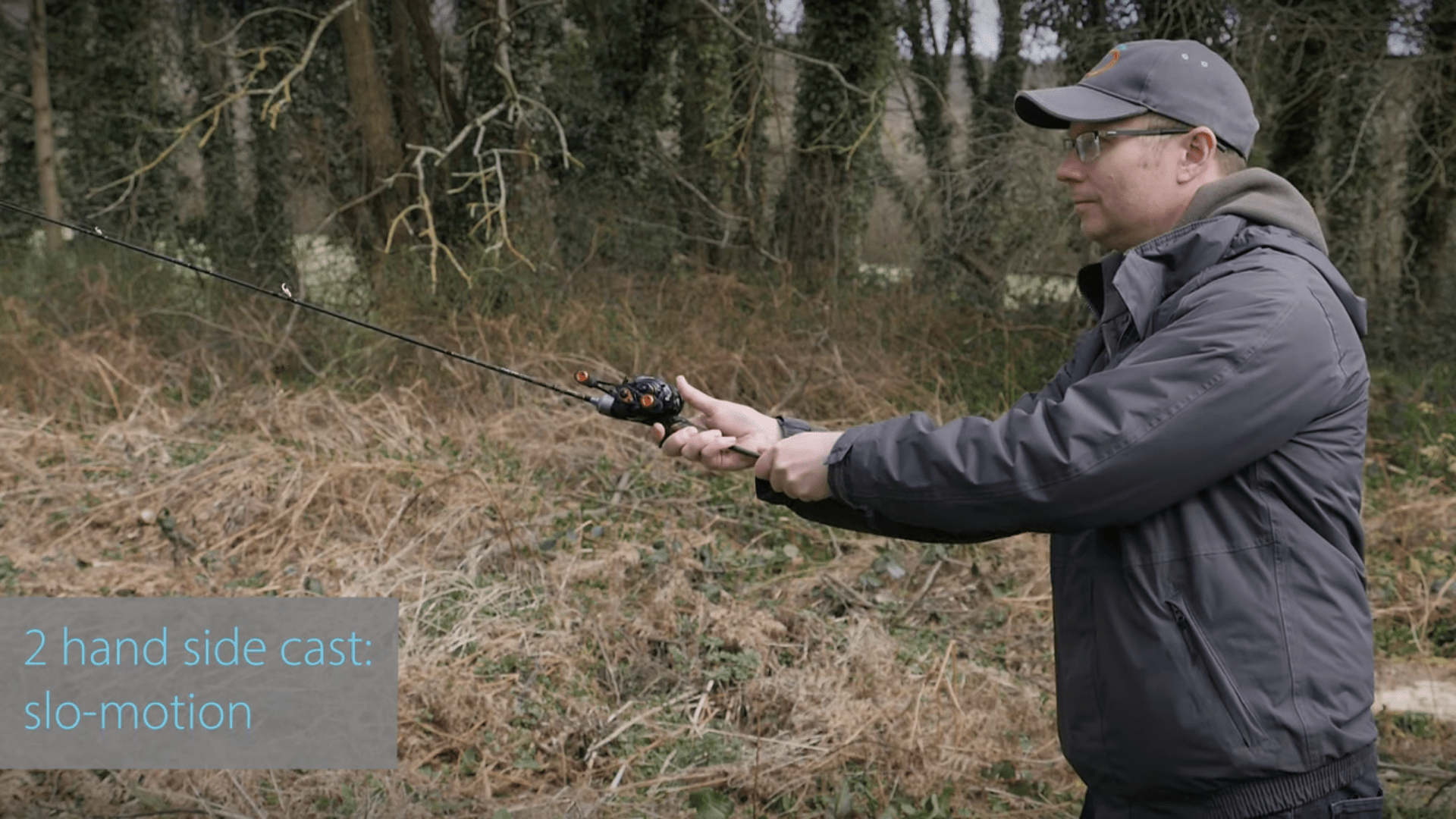
An excellent guide for a person starting to enter the field of BFS fishing . For people thinking of starting in investing in BFS equipment it might be useful to put together suggested combinations of rod , reel of various price levels that have been proven in the field should they not have the inclination
to carryout any research on the matter for various reasons .
Thank you Robert – I think that’s a really great suggestion. When I next get the opportunity to work on it I’ll add in options for combos that have worked in my experience.
Very best wishes
Paul
[…] Bait Finesse Casting Rod Buyer’s Guide & Features Breakdown […]
[…] Bait Finesse Casting Rod Buyer’s Guide & Features Breakdown […]
hola pablo estoy entrando ests mundo de pesca distinta que hacia antes me gustaria k me recomendaras una caña ideal para practicar back hand cast y side cast y pitching.. que acompañe con carrete shimano curado bfs.. que sea de aliexpress ya que mi pais no llegas eso tipo de caña.. desde ya muchas gracias
Hola,
Gracias por su pregunta. Creo que para los tipos de lanzamiento que le interesan, una caña bastante corta podría ser lo mejor. En algún lugar alrededor de 1,5 m (o incluso un poco más corto). La clasificación de peso del señuelo debe coincidir con sus señuelos habituales (por supuesto). Entonces creo que una acción un poco más lenta también puede ayudarlo a desarrollar su sincronización y también hacer que la caña haga más trabajo (¡en lugar de su brazo!). ¿Quizás podría mirar algunas de las varillas de grafito o vidrio hechas por Dankung? Tienen videos de sus varillas en uso y, aunque no las he usado personalmente, la “recuperación” de las varillas parece que deberían funcionar bien. Debido a que la elección de la caña es tan personal, es muy difícil para mí decir cuál es la mejor caña para ti. Solo tú puedes saber eso en última instancia. Sin embargo, si su experimento con una caña no funciona, debería poder encontrar personas en la “familia” de BFS que quieran comprarle esa caña. Es probable que sea la caña perfecta para alguien. ¡Buena suerte con tus experimentos! Pablo
A comprehensive and interesting piece which I’ll re-read, much to think about. I’ve used casting gear for half a century, and always regarded myself as statistically unusual! I’ve rarely met others in UK who share my enthusiasm… I started out using (naturally) Abu “Caster” series rods, for pike initially, though I never found pike an attractive species… I thought the same methods would work with bass (European sea bass) and long before I heard of anyone else using plugs in the sea for bass, I caught my first this way – in 1973, with an Abu Caster 152, Ambassadeur 5000C, and a Shakespeare wooden topwater plug. I caught a great many bass like this in the 1980s, best a 7-pounder in Dorset, Rebl J13 floating jointed minnow. Then I didn’t fish for ages, but these days I spend months each year in S.France where they have American largemouth bass in lakes & rivers – I fish from a sit-on kayak. Decades ago I started building my own rods, and I’ve built them for my French fishing – I use the superb blanks made by CTS in New Zealand.
Hate to criticise, but I was surprised to see, “some anglers, particularly those who prefer a classic “round” baitcasting reel to a low-profile one, might choose a triggerless grip.” This seems the opposite of good practice to me! Traditional round reels (I have a couple of Ambassadeurs still) need an offset trigger-grip otherwise they’re wildly unbalanced: sticking them onto a straight grip, with no trigger, is the last thing I’d ever do! All my casting rods (6-7 feet, one piece) have triggers, and those for my Abu Morrum 1600SX and old 1000X use vintage Abu Speedlock handles which I’ve had customised, shot-blasted then powder coated in exotic colours; rods made to use with my Shimano low-profile reels use Fuji ACS trigger grip handles.
Yours is a great site, just discovered it, will explore it thoroughly.
Best wishes and Tight Lines – Tony
Thanks for the detailed comment Tony,
Regarding the round reel/triggerless grip – I felt compelled to report accurately what is happening in the BFS community with some anglers’ personal choices.
It is worth noting that this seems to apply to the Calcutta Conquest BFS specifically – since everyone I know is always surprised to find out how tiny that reel is when they get it out of its box for the first time!
That’s the main reason I photographed it with a penny sitting on top of the spool (for scale) for the “BFS” coffee-table book published last year – and it might also explain why palming it in the absence of a trigger/offset could work for people if their hands are the right size and shape.
Paul
Thanks Paul. I know nothing of this “BFS community” but it’s encouraging to hear that others share my appreciation of lightweight casting kit! Seriously, I’ve come across remarkably few Brit anglers using it, and more than a few find it eccentric – such as the friend who said my 6-foot casting rod was a toy compared to his beachcaster, until I proceeded to use it to catch a 7-pound bass while he caught nothing…
I’m interested in the Calcutta Conquest range, though frankly I’m more likely to buy an Aldebaran; that header picture still looks to me like an unbalanced rig! Modern Fuji (and other) trigger-grip reelseats are best suited to current low-profile reels; I use home-built rods using (typically) ACS seats and Shimano Scorpion, while round reels sit on my customised Speedlock handles, with that deep recess. I could post a picture or two, not sure that’s possible here.
rgds Tony
I think I can picture it in my mind’s eye Tony!
P
I am in agreement with you that (for me at least) a trigger is prettymuch essential for any baitcaster reel, but especially regarding the offset reel-seat for round reels.
A low-profile reel is fine on a regular “straight” reel-seat, but for round reels I really prefer the “old-school” offset style to bring the reel more in-line.
I have been buying “vintage” handles off ebay & using those with a section of 9mmOD/6mmID pvc tube as an adaptor. I stripped the old paint off & polished rather than powdercoat, I like the look of the bare metal, also the Shakespeare handles I found have got the slightly angled grip which is nice.
Nobody seems to offer these kind of handles any more, aside from a really nice CNC version on Aliexpress… I got a couple of these and they are really nice quality, look great with Tendershoot and Loongze reels as the gunmetal anodised finish is a perfect match… (I am a sucker for aesthetics), but the ergonomic improvement (for me) over a straight grip is a big deal.
Excellent article Paul , its not easy conveying a feeling of a rod into words .
Thank you Darren – coming from yourself I really appreciate that,
Paul
Interesting article Paul!
Slipped into the BFS jungle about 5 years ago, and my first rod was a Kuying Teton TTC662L, a good all-round rod for the upper weights within BFS. Today, I still like to use it when it comes to Carolina rigning. I have not yet seen the need to buy any high-end rods , I have exclusively different China built rods (primarily from AliExpress). I fish primarily for perch, and think I have found a rod that suits my fishing very well, and my nr 1 choice among my rods right now is my Tsurinoya Proflex 2, a very fast rod with a sensitive tip. This rod really shines with nedrigs and all other softbait fishing!
Nice stuff Kalle – my colleague at the Wild Trout Trust has the Proflex 2 and likes it a lot.
P